
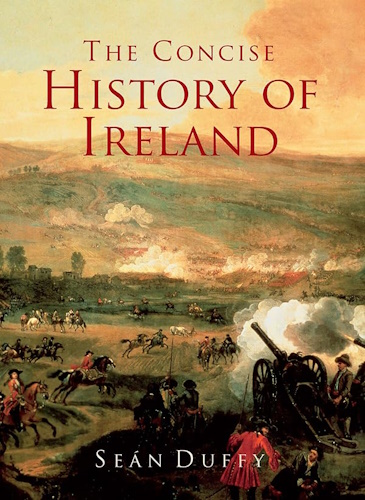
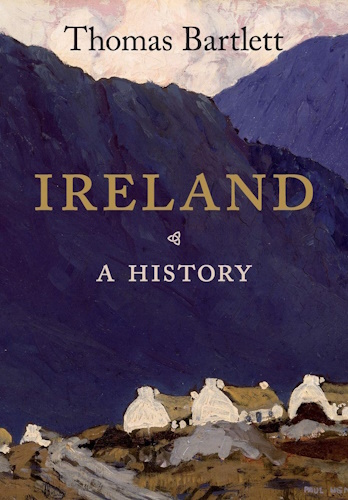
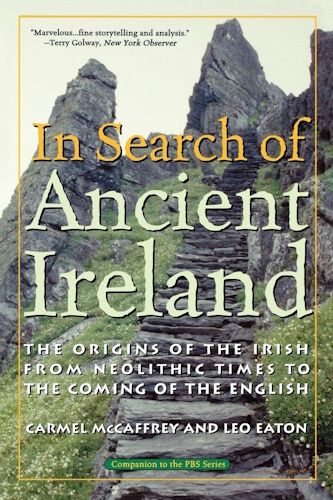


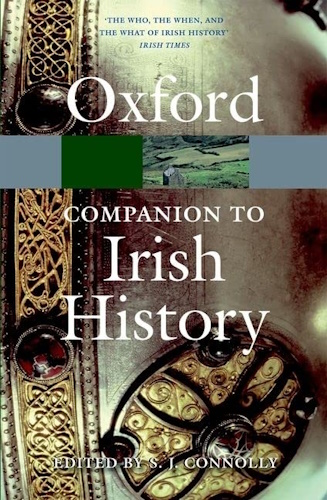
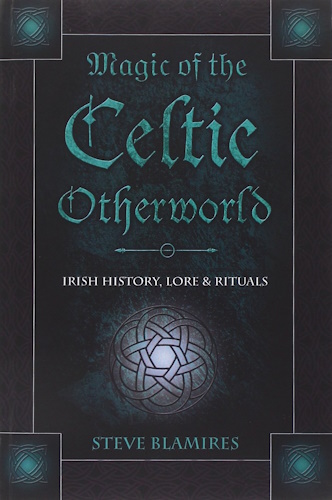
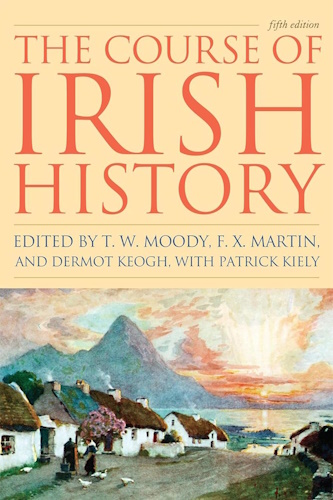
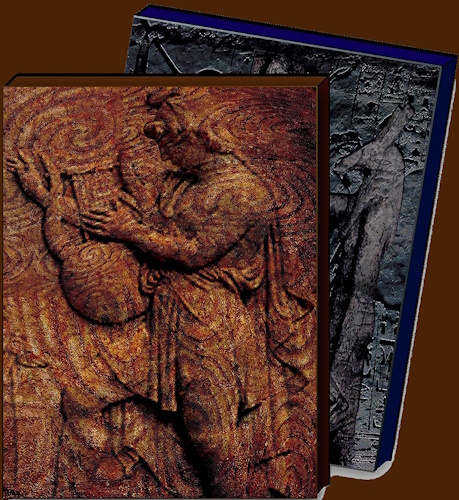
L. A. Waddell
Appendix VI to Volume I
of
The Irish Origins of Civilization
by
Michael Tsarion
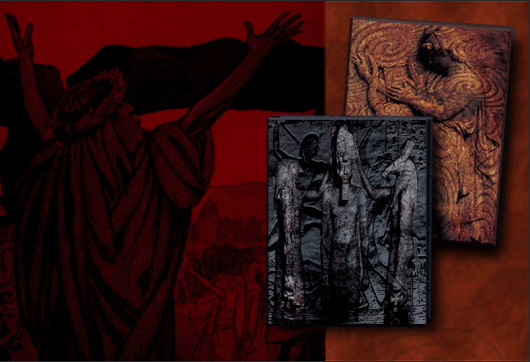
![]()
![]()
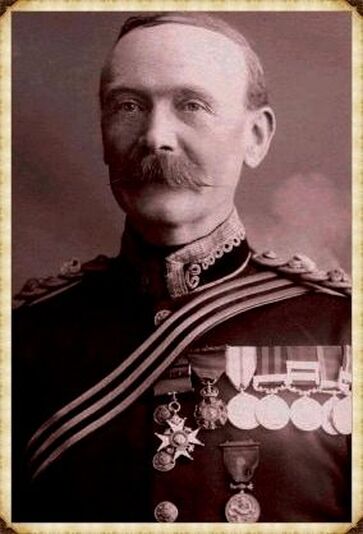
Lieutenant Colonel Laurence Austine Waddell (1854-1938), was an exceptionally learned English antiquarian, scholar and explorer. He was a polymath who spoke several oriental languages, as well as being an expert on the flora and fauna of India and Tibet. His highly controversial revisionist works concern the origin and identity of the so-called Aryan Race. His exemplary volumes on race and the origins of civilization are the following:
- Makers of Civilization in Race & History
- Phoenician Origin of the Britons, Scots & Anglo-Saxons
- Egyptian Civilization: Its Sumerian Origin & Chronology
- The Sumerian Dictionary
- The British Edda
On this page I present an overview of Professor Waddell's monumentally important revisionist work on history, noting that, for the most part, it compliments that of later savants such as Anna Wilkes and Comyns Beaumont.
The Edda
According to Waddell, this is not of Scandinavian origin, but derives from Britain. Controversially, he states that it predates the Finnish Kalevala. The Arthurian legend (and Grail Legend) also have their origin in what Waddell refers to as the British Edda. The confusion occurred due to the deliberate mythmongering of monks and scribes during the Christian era - Mtsar
How the Edda texts appear to have become lost in Britain and preserved in the remote inaccessible frozen fastnesses of inhospitable Iceland is referred to in the Appendix, the main cause being the notorious wholesale destruction of Ancient Briton manuscripts, stigmatized as "pagan," by the fanatical early Christian missionaries in Britain - L. A. Waddell
Iceland, where the Edda texts were discovered in the eleventh century A.D., and now a Danish provinces since 1384, derived its writing and its earliest colonists from Britain and Ireland - ibid
It first appears in history as visited by a party of Irish-Scot hermits of the Culdee order, with their wives and families, about A.D. 795 - ibid
Waddell believed it was Norsemen, who, after briefly residing in Britain during the 10th and 11th centuries, appropriated the lays and stories of the Arya that constitute the Edda, taking them back to Scandinavia where they were eventually adopted and embedded into Nordic culture. Of course, the Christian Culdees (or Culdeans) were responsible for the sequesterment and disfigurement of ancient Druidic (Aryan) lore. In this case, the British Druids would have been the Edda's true authors. (The term Edda did not appear and was not used until the 17th century AD) - Mtsar
Snorri Sturlason
...we shall find that Snorri's fictitious tale is no Edda at all, and that his purported translations of the Edda extracts, which he cites, so often completely travesty - Waddell
The Voluspa
Considered pure and accurate by Waddell. It is the Vision of the Sibyl - the prophetess or wise-woman. (Vol or Volorefers to a "wise woman.")
This long lay is admittedly the finest of all the Edda poems.It is appreciatively called by Professor Ker "the noblest work of the Northern imagination" - Waddell
She was held in high honor, and at the great autumn festivals of rejoicing was seated on a high seat or throne, and sang her songs to the assembled nobles and populace. Her lay was called a "Vision" - ibid
This central Edda poem, discovered as the backbone and framework of the entire epic, is disclosed as the oldest form of the Edda epic and complete in itself" and in its refrain we seem to find, as seen later, the original form of the name"Edda," which was latterly applied to the whole collection - ibid
The form of the epic as preserved in its central lay retains presumably something of the shape of the original epic as composed shortly after the great epoch of the Rise of Civilization about 3380 BC, which it celebrates - ibid
There were bone fide female druids (druithin) who fought the Roman invaders to the bitter end, entering into the chronicles of their conquerors. (Consider references to the Valkyries, Norns, Volva, etc.)
Mythmongering
This falsification of the history of Mesopotamia and of civilization has hitherto grossly misled historians in general - Waddell
Throughout his work Prof. Waddell implicates Jewish and Christian mythmongers who deliberately altered history to suit their own agenda. As far as Waddell was concerned, terms such as "Anglo-Saxon" were late inventions and wholly inaccurate. In his masterly British Edda, he sets about reconstructing the true histories of Europe, Egypt, Sumeria and Britain, showing that the Eddas are not originally of Scandinavian origin - Mtsar
According to Waddell, the fall of the Gothic-Aryans took place when they were forced to convert to Christianity, after which their sacred traditions and motifs were desecrated and obscured by the mythmongers. Many of these leitmotifs were appropriated by Christianity, turning up in mangled form in the various scriptures of later Jews and Christians - Mtsar
That Christianity came from Judaism is acknowledged by churchmen, but it never has been truthfully divulged before where Judaism had its origins and home, or who were the Hebrews and the Jews - Conor MacDari
If those interpreters had availed themselves of the light shed by the Celtic languages upon the pages of the Bible over which they labored, they would not have sanctioned the huddling together of so many countries and cities in Chaldea - a place not to be found even in name in the whole Hebrew Bible - Anna Wilkes (Ireland: Ur of the Chaldees)
The Jewish and Christian mythmongers saw to it that the iconic figures of previous pagan nations were transmogrified into Christian saints. This was particularly true of characters from the pantheons of high Aryan cultures. We get St. Denis from Dionysus, St. Agnus from Agni, St. Bride from Brigit, St. Andrew from Indra, St. Dagan from Dagon, St. Cronan from Chronos, St. Brendan from Bran, St. Nicholas from Nikor. Additionally, we get Terah from Taranis, John from Oannes, Cain and Cohen from Conn, Peter from Ptah, Adonai from Adon, Thara from Thor, Noah from Nuada, Luke from Lugh, Paul from Apollo, Jesus from Iesa, etc. Indeed, numerous characters from the Old and New Testaments - such as Terah, Abraham, Jacob, Isaac, Saul, Solomon, David, Seth, Abel, etc, find their antetypes in Aryan culture of the West - Mtsar
Many Biblical personal names and place-names such as Adam, Cain, Nahor-Thara, Terah, Temar, Teman, Heber, Levi, Bethel, Rahab, Ben, Daniel, Galilee, Gilead, Gad, Cush, Midian, Shinar, Moab, Elam, Shem, Esau, Lud, Phalec, Ur, Maccabee, Herod, Lamech, Asha, Hebron, Machpelah, Harran, Aramean, and so on, are purely Irish (Aryan), as areall the Hebrew letters and 12 tribe names - Mtsar
Troy
For Waddell, the city of Troy (excavated by his colleague Heinrich Schliemann), in North-Western Turkey, was the center of ancient civilization and cradle of the original Arya, who had colonized the area from around the third millennium BC. These Gothic-Aryan settlers were originally from Sumeria, says Waddell, where they had been for an even longer period. Until the fall of the seven Guti kings of Sumeria, Gothic-Aryans held Sumeria against all rivals.
(In this regard, Waddell differs from Donnelly, Wilkes, MacDari and Beaumont, who downplay the role and significance of Sumeria and the east. In any case, Waddell's case holds as long as we realize that it plausibly points to the presence of satellite colonies and settlements in Mesopotamia. Waddell vision concurs with these scholars in the sense that he too assertively positions the main imperial seats of the Arya in the West.)
In due course, says Waddell, the Sumerians colonized other lands to the east and west. Races and tribes we refer to as Ionians, Dorians, Achaeans, Hellenes, etc, were connected to the Sumerians. Their main capital in the Near-East was Troy, near Cappadocia, beside the Dardanelles, which were named after their supreme lord, King Dar, Adar or Thor. This race's Mediterranean-based empire neighbored that of the Cretans, and expanded northward to Dacia and Thrace. It also included all the s0-called Phoenician ports, given that according to Waddell, the Phoenicians were identical with the Sumerians (Western Aryans).
Conquest of Britain
It was a king from this empire in Turkey who around 1103 BC set out for Britain. He was King Brutus, after whom Britain takes its name. It was Brutus' saga (and that of his ancestors) which was recorded in the Edda, which as Waddell proves is not originally Scandinavia, but British. It was a saga added to others in the vast Druidic corpus.
Ptiera
Other great capitals of the Goth kings were Vidara (in the center of Cappadocia) and the high up city of Ptiera (later occupied by the Hittites). The place-name is akin to Tara, in Ireland, known in Gaelic as Temair.
Hurrians
The Hittites or Katti, and the Hurrians, are but two tribes related to the Goths of Asia Minor. The Luvians of Mesopotamia were, like the Canaanites, Phoenicians, Philistines, Cretans and Amorites, also a related group.
King Tor/Thor
Also rendered Tur, Tura, Dar, Dur or Adar, he was the great patriarch and original hero of Sumeria. Lord of Troy and the Aryan empire situated in the eastern Mediterranean, he is identical with King Arthur and the Biblical Adam. The name may be the origin of Toro, signifying the bull. Was Thor symbolized by the great Bull-god, the antetype for the minotaur? Was he the original Ba'al? - Mtsar
Thor (now disclosed as the leading hero of the Edda), so far from ever having been in Iceland or Scandinavia, was a King of Troy in Asia Minor - Waddell
From his name we get Thursday (Torsdag).
Dan
The Sumerian appellation for Dar, Dur, Tor, Thor, Adar or Arthur. Many European words and place-names feature this god-king's name. There is also the "Tribe of Dan." The term can also be rendered Tan, Tann, Tanen, Than, Thane, Danen or Danan, etc. (In Gaelic ard means "high," dara ordoire means "oak.")
Ad/Adam
A-Dan. Another appellation for Thor. Not to be considered the first man, but first king of the first nation of Gothic-Aryans. The name was later adopted and misapplied by Biblical mythmongers. Adam was, like King Thor, keeper of the sacred garden. He is identical with the Egyptian Atum - Mtsar
Igg/Ygg/Sig
A title of Tor, Thor or Arthur. This name connotes the great Ash or Rowan, the Tree of Life beloved by the king and his people. The story of the central tree was taken and completely bowdlerized by Jewish and Christian mythmongers, peddlers in lies and falsehood - Mtsar
Zak/Zagg/Zak
Another title of the same heroic figure. Might connect to the horned stag god, sacred to the Goths, Celts and Scythians. This animal guarded Igg's Tree. The character may be the origin of Jack, as in Jack and the Beanstalk, the giant killer, and Jack the Jumper, etc. He was the origin of the Greek Zeus (from Zak or Zax).
The Goat and Deer metaphor, pictographic of his name, is freely applied to him by the Surnerians and Hittites, just as it is to Thor in the Edda - Waddell
His sacred Rowan-tree, with its guardian Goats, is also freely pictured by the Sumerians and Hitto-Cappadocians, exactly as it is described as Thor's "Ygg-drasill" - ibid
The Edda describes Adam's Aryan European Gothic forbears in the Danube Valley as having already advanced in civilization far beyond the other tribes of the world, in that rich and temperate region. And he himself is recorded as saying - "I am the son of a civilized green branch" - ibid
From this we see that Jehovah or Jove was none other than the Gothic-Aryan Thor, keeper of the holy garden. (Herefor more...)
St. George
Another manifestation of the hero. He is the dragon-killer and supreme king-hero of the North-Western Arya. Name can be rendered gor, gorr, gore, gir, geir, geor, gara, gary, etc. Many British and European kings had or took this name. Do they know something we do not? - Mtsar
Indra
The Vedic (Indian) version of Thor or Arthur. Their exploits are identical. Indra is described as tall and fair. Zeus is also identical to the Vedic Indra and British Thor. In folklore this character appears as Jack the Giant-Killer. His image probably accounts for the Cerne Abbas figure in Devon. Indra's name can also be rendered Indara or Andvara, etc, where the syllable dara alludes to the Druids as well as to the sacred oak. Thanks to the mythmongers, he appears in the Christian mythos as St. Andrew - Mtsar
Midas
Another appellation for Adam-Thor. See Irish Mider and Persian Mithra - Mtsar
Grail Legend
Thor's achievements and Grail legend were substantially identical to those of the world-emperor King Arthur of the older British legend - Waddell
Sumerian Accounts
The Sumerian records regarding him date continuously back to the inscription on his sacred trophy bowl or Holy Grail by his great-grandson, about 3245 B.C. - Waddell
Egypt
Settled or annexed by the early Sumerian kings who inspired its civilization during predynastic times. Waddell's Thor is none other than Osiris. He is also Atum (or Adam). Thor is also Horus, or more correctly Heru, from which we get "hero."
Waddell's work confirms that tall blondes and their cultures existed in the Near East, a stone's throw from Egypt, making it all the easier to accept that there were kindred fair-skinned races in Egypt. Indeed, in other work Waddell confirms that Egypt's Amenist nobility were Aryan-Goths, supporting the thesis presented in The Irish Origins of Civilization - Mtsar
Eve
Wife of Tor or Arthur. She is one of the vestal virgins sent to spy on Thor's court by the nearby Amazon tribe of women. Some of this tribe were allied with El and the Edenites. Others favored alliance with the Goths. Thor takes her for wife, and she becomes a fierce warrioress against evil. She forms an Amazonian detachment to fight against the Wolf Clan. She is the antetype of both of Eve and Queen Guinevere. She is given custodianship of Thor's sacred garden and Rowan tree bearing the sacred fruit. Her name can also be rendered Gunn or Gyn, also as Idunn, the name of the Nordic goddess. We get the word queen from her name. Gen or Gyn means "female." The name can also be rendered Ifa, Efe or Efa. From this comes the Aramaic Hawwah or Eve. She is Asherah to Thor in his of Yahweh or Jehovah. She may be akin to Semiramis, Anahita, Anat, Neith, Tanit, Ishtar, Astarte, Aphrodite, Venus, and so on. Waddell certainly sees her as the antetype of Minerva or Athena. She becomes the deadly foe of El or Eldi, protecting Thor-Adam from the latter's evil spells and curses. Identical with Isis and Noridc Freyja, her day is Friday. As guardian of the garden (Asgard and/or Midgard), she presides over Valhalla, hall of dead heroes - Mtsar
Lady Sif
Second wife of Thor, from the northern territory. Her titles are Sibyl or Cybele. She is described as fair and golden-haired.
Gan/Gawain
Gan is the Indo-Aryan appellation for the son of Thor-Adam and Eve, or Arthur and Guinevere. His name can be rendered Con, Kon, Kin, Gunn, Gunnar and Connor, etc. It is the origin of the Biblical Cain. Words and titles such as Cohen, Kohen, Caan, Cowan, etc, are further derivations. In Egypt he is Khonsu. In Rabbinical lore he is Quin or Qayn (meaning "lord" or "king" and also "Tiller of the Ground.") This rendition gives Quinn. Another title was Tascio. He is the great hero, identical with Horus, Krishna and Lugh. Con is Master of the Runes (Rowan) and their mystery, as taught him by Eve. In the Old Testament, due to mythmongering at its finest, Con became Cain, the evil brother of Abel. In the true historical context, the latter was the murderer and evil one. In Judaism, the Kohanim were elite priests. In Masonry, a skilled builder was known as the Cowan - Mtsar
Sir Lancelot
The son of Arthur was Sir Gawain, the king's great champion and son-lover of the queen. Sir Launcelot (the lance-bearer) was based on Set and Bald'r, enemy of the king. The discrepancy occurred, says Waddell, because after the defeat of the Edenites, the latter accepted the rulership of the Gothic-Aryans, and were absorbed into Gothic culture. This explains why many images exist of Set and Horus together, presiding over pharaoh. Gawain is also Con, Conn, Connor or Conan, etc. In Irish legend his appears as Cian, father of Lugh, the sun-king. (See also the province of Connaught) - Mtsar
Michael
From Mukla, another appellation of Gan or Con, second king of the Ayra. Can also be rendered Miok.
Odin
Considered by Waddell to be the evil enemy of Thor. Odin can also be rendered Wotan or Wodan. As leader of Thor's enemies - the race of dwarves from Eden - he was also known as Odo. Bodo or Bauda. Snorri rendered this name inappropriately as Odin, a term that did not appear in the original Edda manuscripts. From this evil deity we get the word Wednesday. Wotan's evil consort is El. Later, as the result of mythmongering, the name Odo or Odin was attributed to Thor.
El/Eldi
The evil witch-queen of the dwarfish horde. Her son-lover is Balder. She rules the region known as Eden (ancient Carchemish in Northern Syria), which according to Waddell is not the same as the true garden of the gods with its central tree Yggdrasil. Only when Eden falls to the victorious Goths does Adam (Thor) preside over it as ruler. His co-ruler is the goodly Eve. El or Eldi is probably the antetype of Apophis with her son being Set, Seth or Sut. (Here for more...) - Mtsar
It could also be that after the collapse of their reign, and coming of Adam-Thor, Eden was radically transformed. Thor may have reorganized the place according to the plan of his original Gothic-Aryan homeland near Troy. In this case, the four rivers running out from Eden, may actually have run into it as sources of irrigation. It was from this point that vegetation appeared therein - Mtsar
Thor also prohibited any despicable practices of the past. Many rites and icons were "forbidden," as new altars and customs replaced what had been. If there were areas in Eden where atrocious human or animal sacrifices had taken place - where Gothic captives were cruelly tortured (forced to drink their own blood and eat their own flesh), then slain (as some images show) - it makes sense that no trees would be planted there, and no fruit consumed from trees rooted in that area - Mtsar
In any case, the chthonic mother-goddess Eldi is also Ila, Ela, Ymi, Id, Heidi and Frigg. She is certainly identical with Kali, and other warlike goddesses may be later renditions. The Judaic Lilith is undoubtedly a version of this primordial matriarch. Her son-lover Balder is commonly rendered as the serpent or serpent-man - Mtsar
Balder
Not original to the Nordic pantheon, says Waddell. He is an evil character, the "baleful" or "ruffian." Balder is the equivalent of the Old Testament Abel, but in ignoble guise. Thor is badly wounded by in battle by Balder. (See Irish legend of Balor.) Balder is the equivalent of the Egyptian Set or Sett. He is the evil one thrown out of "heaven" that is from Mt. Ida, haven of the Gothic gods. During peacetime he visited Thor, but was expelled for insulting Eve, the king's wife. This expulsion is commemorated in images of archangel Michael and St. George lancing the dragon. In the final battle, Balder is killed by Michael (Gan or Con), the antetype of Horus (Heru). The saga is commemorated in the tale of Gawain and the Green Knight - Mtsar
Loki
Identical with Lucifer, he is the son of Eldi and Balder. Seals and images showing the three are accompanied by images of lions or wolves devouring goats, symbolizing the dwarf-race destroying Goths - Mtsar
Fall of Man
This event was in fact a second fall, more correctly understood as the revival of the cult of Eldi and Balder which occurred after the passing of Thor-Adam. The serpent-followers of El and Balder rose again. The sacred garden was overtaken and the Arya attacked by the forces of evil - Mtsar
Cappadocia/Turkey
Lands conquered and colonized by the Trojan Goths under Thor. This was in retaliation against invasions of the hordes of Wotan. The Gothic empire stretched north to Thrace, Dacia and banks of the Danube - Mtsar
Phyrgia
Land of the Wolf Clan, the dwarf-race (or Edenites), from which they'd mount attacks on the Goths. Area was finally conquered by the Goths under Thor, in retaliation. Wearing the red Phrygian Cap signified triumph over the demonic enemy - Mtsar
Scythia
Thor and his tribe were described in the Edda as Scythians:
...the traditional old "Land of the Goths" and "Land of the Royal Scyths"...or Sakae, also called by Herodotus Getae, i.e., Goths. Adam-Thor is repeatedly called a "Scyth" in the Edda, as Skoti or Skati - Waddell
Here we have a close connection to Beaumont. This also connects the Goths with the Hyksos of Egypt, and perhaps with earlier Amenist groups. (See below.)
Babylon
After the victory of the Goths against the Edenites, the former erected the first great Babylonian cities such as Erech, etc. Babylonian kings were blood-related to the Turkish Goths and styled their reigns and customs on theirs.
The Jive of Genesis
The garden, tree of life, and apple allude to King Thor, his sacred apple (berry) from the Rowan tree, the original Tree of Life, before the mythmongers got hold of it. The actual Goth garden was in Troy, near the Dardenelles. This can account for the two trees mentioned in Genesis. Despite the mythmongering we see that one tree is pure, the other impure. The tree of the original Gothland versus the tree of Eldi and Balder (the Serpent Race) in Eden, contaminated, impure and "forbidden." This Edenite tree was off limits only in the sense that it was "not our tree," "not worshiped by our people." It is taboo as all practices and icons of the evil Edenites - Mtsar
The Biblical Adam
As Waddell conclusively proves, we are not to think of Adam as a singular entity. He presents the Adamic nobility which civilized the world. His dynasty is secretly implied by this apparently personal name. Specifically, it denoted the high king Thor, and also his lineage. Only due to scurrilous mythmongering has this fact been obscured. In my work it is taken for granted that we are for the most part dealing with races rather than individuals - Mtsar
Serpent
Symbolized Thor's rivals, the Edenite enemies of the Gothic tribes. It was primarily the symbol of the evil queen-matriarch Eldi whose brood were the dwarf-like hordes of Wotan (Balder), keepers of the great cauldron that once seized by Thor became the grail cup - Mtsar
Later, after Lady Eve took charge of the holy grove, the serpent was recast as her companion and ally, coiling about the trunk of the sacred tree to guard it from enemies. The serpent's hissing and strange noises kept thieves at bay and alerted her guards of approaching danger. Any and all later depictions of the goddess with serpent hearken to this original Aryan antetype - Mtsar
Unicorn
The veneration of the goat goes back to at least 2000 BC. The unicorn is a goat-like animal with the special duty of guarding Thor's sacred Rowan, the tree of life. We meet the horned guardian in the form of the Irish Herne or Cernunnos, and Vedic Pashupati. Herne with his antlers of the stag is seen with the evil serpent firmly in his grip, it being the sign of the enemy race. The image of the unicorn and leafy grove with central tree appears again in the sixteenth century on tapestries made in France. The unicorn is usually seen in the company of a lady. Despite Christian trappings, she is a throwback to Lady Ash or Lady Eve, wife of Thor and guardian of his garden, keeper of the sacred berries or apples.
But of this stone…made a statue of Nemesis; and on the head of the goddess there is a crown adorned with stags, and images of victory of no great magnitude. In her left hand, too, she holds a branch of an ash tree, and in her right a cup, in which Ethiopians are carved – Pausanius (Attica)
She was at first erected in the form of Venus, and therefore bore also the branch of an apple tree – Photius
Heraldry
Waddell believed the Lion and Unicorn motif seen on heraldry commemorates the ancient alliance between Edenites (the Lion-Race) and Gothic-Arya, symbolized by the goat or stag, and alternatively as the heraldic unicorn.
Appropriation
Waddell makes it clear that after the final victory of Goths over Edenites, Thor-Adam allowed the Edenites to participate in his culture as long as they abandoned their earthy ways and turned from evil. This is what happened. As a result of this alliance, Gothic culture was infused with the acceptable elements of the Edenites. These chthonic elements, although transmuted, are still perceivable in later Western cultures, such as that of Crete, Greece and Rome. One example would be the widespread usage of divination and oracles. Elements considered "Matriarchal" also derive from the customs of the Edenites. Bacofen's Aphroditic Period corresponds with the Edenic cult. The Demetrian Period corresponding with the Gothic-Aryan.
.
ADDITIONAL
King Menes
…the First Dynasty of Egypt or Menes' dynasty is demonstrated to be identical with that of Sargon's son Manis the warrior or "Menes"...And Menes' Dynasty in Egypt are shown to use generally the same names and territorial titles in the Egyptian inscriptions…as they are written in Sumerian script and in the Sumerian language…Menes, moreover, is demonstrated to be identical with King Minos, the traditional founder of civilization in Crete - Waddell
…it is found that Menes, whose origin and antecedents have been wholly unknown, early revolted against his father and seized Egypt and established there the first local dynasty, detaching it from his father's empire, when he was still crown-prince and governor of the Indus Valley colony of his father's empire - ibid
His ancestry was not clearly known. He is referred to in the Puranas of the Indo-Aryans as Asa Manj - the Far Shooter, a title which reminds us distinctly of the Biblical Saul and David, and also the Celtic Lugh. The term Asa, meant strong or valiant. In the Hindu Mahabharata Menes is Manasyu. Manasyu's title was Prabhu, which comes from Paraa. This is the Egyptian Pharaoh. The Hindu word meant chief, or father, and Prah, means brother, that a relative - ibid (Herefor more...)
The Royal Eye
King Menes was known as the "Royal Eye." This reminds us of the pictogram for Asar (Osiris) showing an eye above a throne. Later pharaohs and nobles of Egypt - such as Pharaoh Aye, of the late eighteenth dynasty - may have mimicked the earlier pharaoh and adopted his chief symbols.
Sargon (Shah Gan)
Father of Menes, he was originally the lord of a large Akkadian empire. Displaced after the Sumerian invasion, he conquered Egypt establishing his new empire there. His son Menes was pharaoh of the first dynasty. King Menes is buried in Northern Ireland. Professor Waddell personally located his burial site in County Tyrone.
Asa
Also rendered Asara, Asaru, Aesar, etc, indicating the Arya. In shortened form it is simply the syllable as, as found in Asgard, Ash, Asha, Asherah, Astarte, Ashtaroth, etc. The Egyptian name for Osiris is Asir, Asar or Asaru. It is the title of A-Tur, Athor or Arthur, that is Thor. Familiar terms like sir, sire, shah and czar, etc, may derive from this original appellation.
Brutus the Trojan
According to historian Geoffrey of Monmouth, King Brutus and his Britons arrived in England from Troy about 1103 BC.This is close to the time I offer for the first arrival of the Atonist-Setians in Spain and Britain/Ireland. Both visitations are in my opinion returns. The arrival of Brutus is not to be considered the first settlement of Arya in Ireland. The kingdom of Brutus, although certainly in the Dardanelles and Asia Minor, was merely a latter-day branch of that originally founded in the Western hemisphere.
The people of Brutus may be akin to the so-called Fir Bolg or Iberians, or perhaps to an earlier group of settlers, such as the Partholans or Nemedians. They may have been finally displaced by the De Danann or later Milesian-Gaels.
Gothic
Goth was a Roman term for the Gotts or "Men of the Goats," namely, the Goths or Aryans. From gott we derive God. The Goths were therefore the "God Men." Derivations include Getes (as in Scythians), Jut (as in Jutland) and Jat (as in the Aryan-Sikhs of Northern India).
Ireland
Known as Urani, Irani or Ierni, etc, and entitled by the earliest Egyptians "Furthest West Sunset Land."
The Hittites
This ancient Khatti or "Catti" ruling race of Asia-Minor and Syrio-Phoenicia also called themselves "Arri" with the meaning of "Noble Ones" - Waddell
- Note: Elsewhere Waddell declares this word Khatti to be the origin of the term "Celt." Augustus Le Plongeon agrees with Waddell on this point. The latter believed the word denoted a "worker in wood." In any case, Waddell firmly believed the Hittites to be part of the great Near-Eastern Gothic-Aryan empire.
The term can also be rendered Gati, Gad or Gadi, etc. It may be related to Kadi or Kadesh. Another permutation is Catti or Cassi. The Portuguese port of Cadiz comes from this ancient word.
Amorites
Also known as the Amurru, Mori, Maris or Martu, they were the early sea-going branch of the Sumerian-Phoenicians, who left many "prehistoric" inscriptions in the British Isles. Waddell believed they were kin of the Gothic-Arya.
Probably they were early Phoenician settlers in Mesopotamia (modern-day Iraq), arriving from Anatolia (Turkey) during the Ubaid Period. Their name may derive from the syllablemer meaning "sea." In the Irish Origins of Civilization books, I query whether they were forebears of the so-called Merovingians, the ruling dynasty of Gaul or France, previously from Germany and Arcadia (Greece). In Gaelic, the term mor means "giant" or "great one."
It is possible that the Amorites were eventually displaced after the Guti descended on Sumeria (Sumer), thereafter settling in the north-east under the name of Amorite. A related group also living nearby were the Aryan group known as the Luvians, ancestors of the elusive Levites. They may have been the Amorites under a different name, or a elite priesthood within their civilization.
The Medes
The Medes or Mitanni were also of Aryan extraction. They were Persian-Aryans.
Hyksos
The Shepherd Kings or Shasu. Could they have been a breakaway group formed after the great alliance between Goths and Edenites? And did they decide to enter Lower Egypt during a weak point in the territory's history? Did they revert to Set worship and reject the Aryan influence and alliance? Were they behind the rise of Akhenaton?
The silence of scholars on the origins and identity of the Hyksos nobility is understandable if indeed they hearkened from Troy and were once part of the high empire of the Arya.
Jospehus was the first historian to break the silence and write the truth. The fault was not, therefore, with him (deceptive as he usually was) but with later historians and scholars who deliberately ignored what he had written about the Egyptian-Jewish connection.
.
The Little People
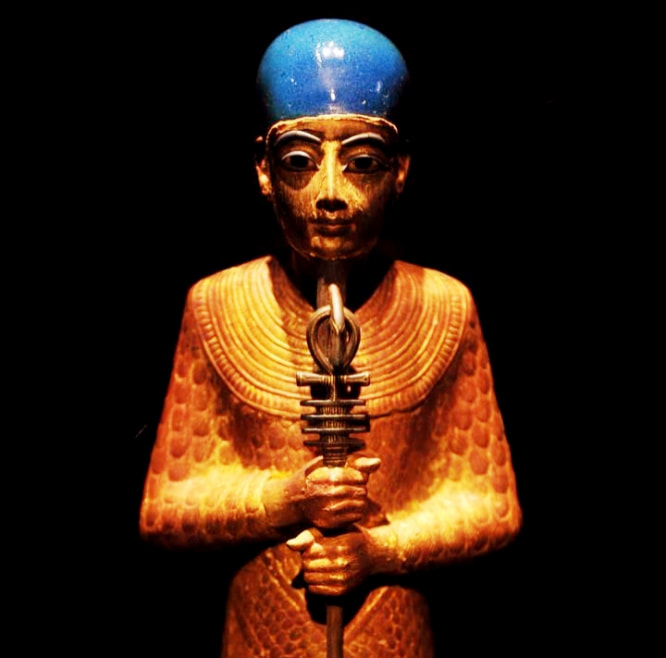
Professor Waddell's vision is not as vast as that of Comyns Beaumont, who lived after his time, but he excels at honing in on crucial events not discussed as fully by the latter scholar.
Waddell's work also suffers from two other significant flaws. Firstly, he subscribes to the East to West traversal of races and the elements of civilization, not realizing that the Western migrations of his Caucasian races were returns.
Secondly, he fails to grasp the true significance of the dwarfish races about which he writes extensively. Nevertheless, he is a good source for the history, so far as it goes, of the so-called Little People - the true Elder Race.
Misreading their identity, however, he presents them as a churlish, semi-demonic race of warlike dwarves who constitute the chief enemies of the taller, fairer European and Near-Eastern Arya. There is no reason for us to strictly follow him in this assessment.
Indeed, as I make clear in other work, the Little People were certainly daemonic, but not in any supernatural or devilish sense. Perhaps they were the true aboriginal race that fought to the bitter end against formidable odds, defending itself against the influx and influence of taller, fairer races.
I have elsewhere stated the case for this primordial race, and conjectured that it was their expertize and inventiveness that was aggressively appropriated by later races whose debt to them is simply incalculable. It may be that almost every element common to later civilizations originally derived from the Little People.
The erection of the numerous megalithic sites, and the astronomical calculations on which they are based - not to mention herbalism, horticulture, brewing, mining, metallurgy, weaponry, music, dance, carving, writing, etc - can be traced to their advanced chthonic civilization.
It is likely that later races used megalithic sites for their own purposes, even adding engravings and inscriptions to make it appear as if they had erected them. We must not be deceived in this regard. At a later date, Phoenicians and other settlers may have attempted to duplicate the techniques of earlier mound-builders, erecting smaller sites in the pretence of being creators of all megalithic structures found.
In my opinion, the Ogham script was the creation of the Little People. So it is with the Nordic Runes. Waddell agrees that the Ogham script is far older than commonly presumed.
A close study of the world's most important megalithic sites (such as those of Cappadocia, Gobleki Tepe, Newgrange, etc) leave us in no doubt of this. Strangely, "researchers" writing on these locations never comprehensively mention the Little People and their contribution, despite local legends, going back millennia, referring to their presence, industry and "magical" abilities.
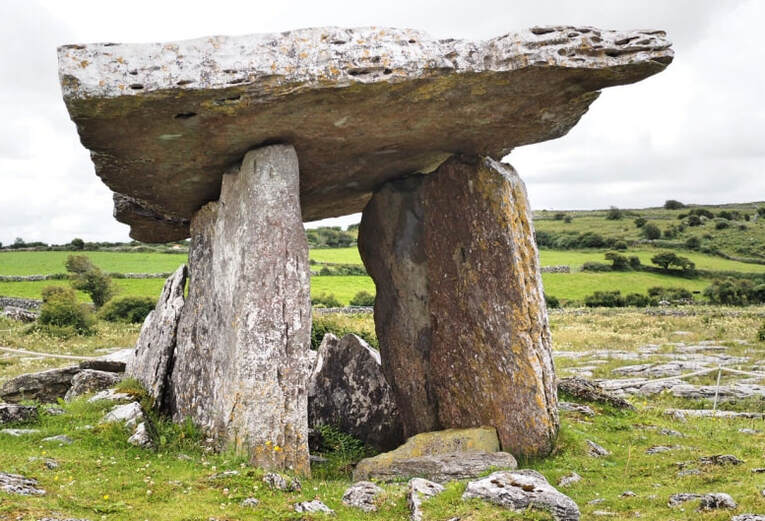
The early Irish mention the Little People constantly, as do the Norse, Zuni and Hopi Indians of North America. The latter refer to them as the elder race, and also as the Ant People. They were the original Asa, Aser or Aesar of Nordic climes, the "Faerie Folk" of the British Isles. The ancient Olmecs were a branch of the Little People as were the Maya and other cultures. Several "Mythological" races of Ireland contained their blood, particularly the so-called Fomorians.
Regrettably, Waddell did not even guess this, and preferred to cast the Little People as savage and hostile.
I think their hostility against rival races was completely justified. By the time of the historically late periods dealt with by Waddell, the Little People had been enslaved en masse by humans and finally decimated. Due to the callous treatment their race dwindled and soon passed from history altogether, their memory remaining only in myths, legends and fairytales. Some of their blood was preserved in the ignorant pygmy races of certain lands.
Waddell's descriptions of the Little People may be correct to an extent. Due to disease and other causes, many of their race were deformed, hideous and handicapped. Hence the folktales telling of curses, omens and baby-stealing, etc. Stories of trolls, goblins, leprechauns, pixies, sprites, dwarves, etc - not to mention spooks, wights, gargoyles, etc - derive from the time when humans encountered the Little People. The negative renditions are the result of human guilt over their conduct toward the Little People, a compensation for their total annihilation of the ancestral race.
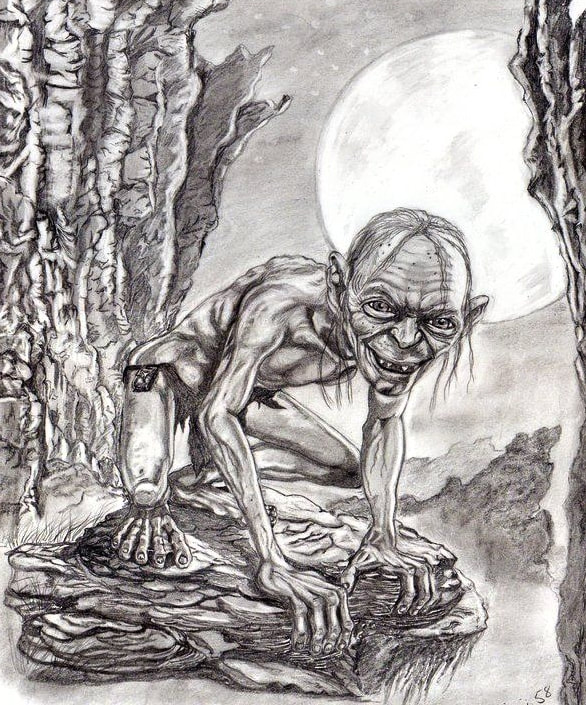
This appropriation of numerous elements from the Little People, meant that the civilizations we take for granted as being the world's first, were in fact not founded as strongly as hitherto believed. Certainly, those races referred to as Celtic, Gothic, Teutonic and Nordic, etc - beloved by scholars such as Waddell - eventually fell, or joined with Rome, because culturally speaking they had finally declined and come to their end.
The so-called Mythological Cycle preserves what remains of the Little People's history. They appear in comical and bizarre form in fiction (C. S. Lewis & J. R. R. Tolkien, etc), and a plethora of children's stories. They appear as fauns, satyrs and the so-called "Greys," and as garden gnomes and Santa's little helpers during Christmas.
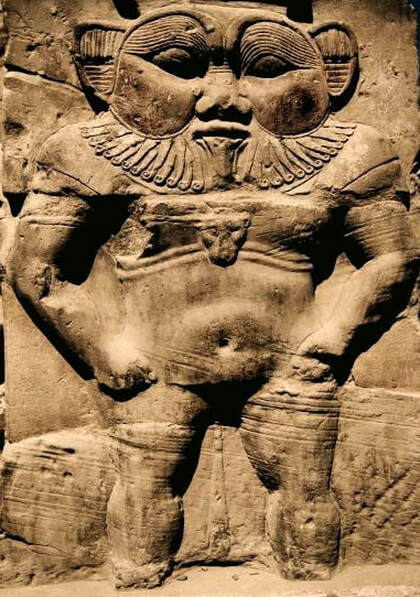
(Here for more...)
Professor Waddell's oversights regarding the presence and influence of the Little People do not reduce the overall significance of his findings on the movement of races and supremacy of Western civilization. His revisionist work is highly recommended, providing needed insight into many obscured events in world history.
. . .
RECOMMENDED LINKS
L. A. Waddell
Phoenician Origins
Little People [I get a "You are unauthorized to view this page. Sign Up Now to access this content."]
A. C. Sayce
Jason Jorgani (Iranian Leviathan: A Monumental History of Mithra’s Abode)
Cult of Mithra
Norse Edda
Voluspa
City of Troy
Cappadocia
Carchemish
Bactria
Continue to Part II
![]()
![]()
![]()
![]()
Disclaimer:
Some material presented will contain links, quotes, ideologies, etc., the contents of which should be understood to first, in their whole, reflect the views or opinions of their editors, and second, are used in my personal research as "fair use" sources only, and not espousement one way or the other. Researching for 'truth' leads one all over the place...a piece here, a piece there. As a researcher, I hunt, gather and disassemble resources, trying to put all the pieces into a coherent and logical whole. I encourage you to do the same. And please remember, these pages are only my effort to collect all the pieces I can find and see if they properly fit into the 'reality aggregate'.
Personal Position:
I've come to realize that 'truth' boils down to what we 'believe' the facts we've gathered point to. We only 'know' what we've 'experienced' firsthand. Everything else - what we read, what we watch, what we hear - is what someone else's gathered facts point to and 'they' 'believe' is 'truth', so that 'truth' seems to change in direct proportion to newly gathered facts divided by applied plausibility. Though I believe there is 'truth', until someone representing the celestial realm visibly appears and presents the heavenly records of Facts And Lies In The Order They Happened, I can't know for sure exactly what "the whole truth' on any given subject is, and what applies to me applies to everyone. Until then I'll continue to ask, "what does The Urantia Book say on the subject?"
~Gail Bird Allen
![]()
![]()








-
Urantia Book, 44:0.11 - The Celestial Artisans
Never in your long ascendancy will you lose the power to recognize your associates of former existences. Always, as you ascend inward in the scale of life, will you retain the ability to recognize and fraternize with the fellow beings of your previous and lower levels of experience. Each new translation or resurrection will add one more group of spirit beings to your vision range without in the least depriving you of the ability to recognize your friends and fellows of former estates.
-
Princess Bride 1987 Wallace Shawn (Vizzini) and Mandy Patinkin (Inigo Montoya)
Vizzini: HE DIDN'T FALL? INCONCEIVABLE.
Inigo Montoya: You keep using that word. I do not think it means what you think it means. -
Urantia Book, 117:4.14 - The Finite God
And here is mystery: The more closely man approaches God through love, the greater the reality -- actuality -- of that man. The more man withdraws from God, the more nearly he approaches nonreality -- cessation of existence. When man consecrates his will to the doing of the Father's will, when man gives God all that he has, then does God make that man more than he is.
-
Urantia Book, 167:7.4 - The Talk About Angels
"And do you not remember that I said to you once before that, if you had your spiritual eyes anointed, you would then see the heavens opened and behold the angels of God ascending and descending? It is by the ministry of the angels that one world may be kept in touch with other worlds, for have I not repeatedly told you that I have other sheep not of this fold?"
-
Urantia Book, Foreword - 0:12.12 - The Trinities
But we know that there dwells within the human mind a fragment of God, and that there sojourns with the human soul the Spirit of Truth; and we further know that these spirit forces conspire to enable material man to grasp the reality of spiritual values and to comprehend the philosophy of universe meanings. But even more certainly we know that these spirits of the Divine Presence are able to assist man in the spiritual appropriation of all truth contributory to the enhancement of the ever-progressing reality of personal religious experience—God-consciousness.
-
Urantia Book, 1:4.3 - The Mystery Of God
When you are through down here, when your course has been run in temporary form on earth, when your trial trip in the flesh is finished, when the dust that composes the mortal tabernacle "returns to the earth whence it came"; then, it is revealed, the indwelling "Spirit shall return to God who gave it." There sojourns within each moral being of this planet a fragment of God, a part and parcel of divinity. It is not yet yours by right of possession, but it is designedly intended to be one with you if you survive the mortal existence.
-
Urantia Book, 1:4.1 - The Mystery Of God
And the greatest of all the unfathomable mysteries of God is the phenomenon of the divine indwelling of mortal minds. The manner in which the Universal Father sojourns with the creatures of time is the most profound of all universe mysteries; the divine presence in the mind of man is the mystery of mysteries.
-
Urantia Book, 1:4.6 - The Mystery Of God
To every spirit being and to every mortal creature in every sphere and on every world of the universe of universes, the Universal Father reveals all of his gracious and divine self that can be discerned or comprehended by such spirit beings and by such mortal creatures. God is no respecter of persons, either spiritual or material. The divine presence which any child of the universe enjoys at any given moment is limited only by the capacity of such a creature to receive and to discern the spirit actualities of the supermaterial world.
-
Urantia Book, 11:0.1 - The Eternal Isle Of Paradise
Paradise is the eternal center of the universe of universes and the abiding place of the Universal Father, the Eternal Son, the Infinite Spirit, and their divine co-ordinates and associates. This central Isle is the most gigantic organized body of cosmic reality in all the master universe. Paradise is a material sphere as well as a spiritual abode. All of the intelligent creation of the Universal Father is domiciled on material abodes; hence must the absolute controlling center also be material, literal. And again it should be reiterated that spirit things and spiritual beings are real.
-
Urantia Book, 50:6.4 - Planetary Culture
Culture presupposes quality of mind; culture cannot be enhanced unless mind is elevated. Superior intellect will seek a noble culture and find some way to attain such a goal. Inferior minds will spurn the highest culture even when presented to them ready-made.
-
Urantia Book, 54:1.6 - True And False Liberty
True liberty is the associate of genuine self-respect; false liberty is the consort of self-admiration. True liberty is the fruit of self-control; false liberty, the assumption of self-assertion. Self-control leads to altruistic service; self-admiration tends towards the exploitation of others for the selfish aggrandizement of such a mistaken individual as is willing to sacrifice righteous attainment for the sake of possessing unjust power over his fellow beings.
-
Urantia Book, 54:1.9 - True And False Liberty
How dare the self-willed creature encroach upon the rights of his fellows in the name of personal liberty when the Supreme Rulers of the universe stand back in merciful respect for these prerogatives of will and potentials of personality! No being, in the exercise of his supposed personal liberty, has a right to deprive any other being of those privileges of existence conferred by the Creators and duly respected by all their loyal associates, subordinates, and subjects.
-
Urantia Book, 54:1.8 - True And False Liberty
There is no error greater than that species of self-deception which leads intelligent beings to crave the exercise of power over other beings for the purpose of depriving these persons of their natural liberties. The golden rule of human fairness cries out against all such fraud, unfairness, selfishness, and unrighteousness.




